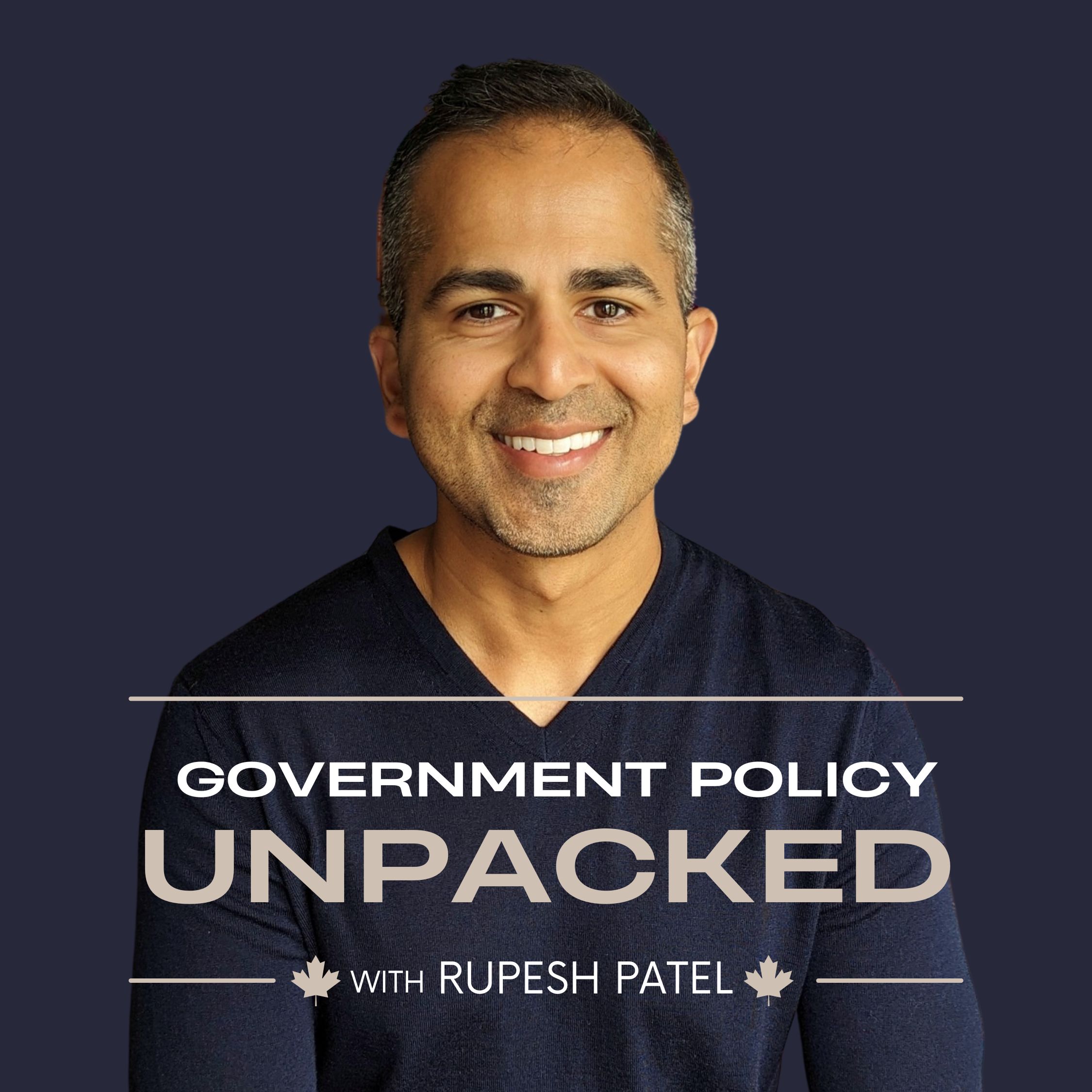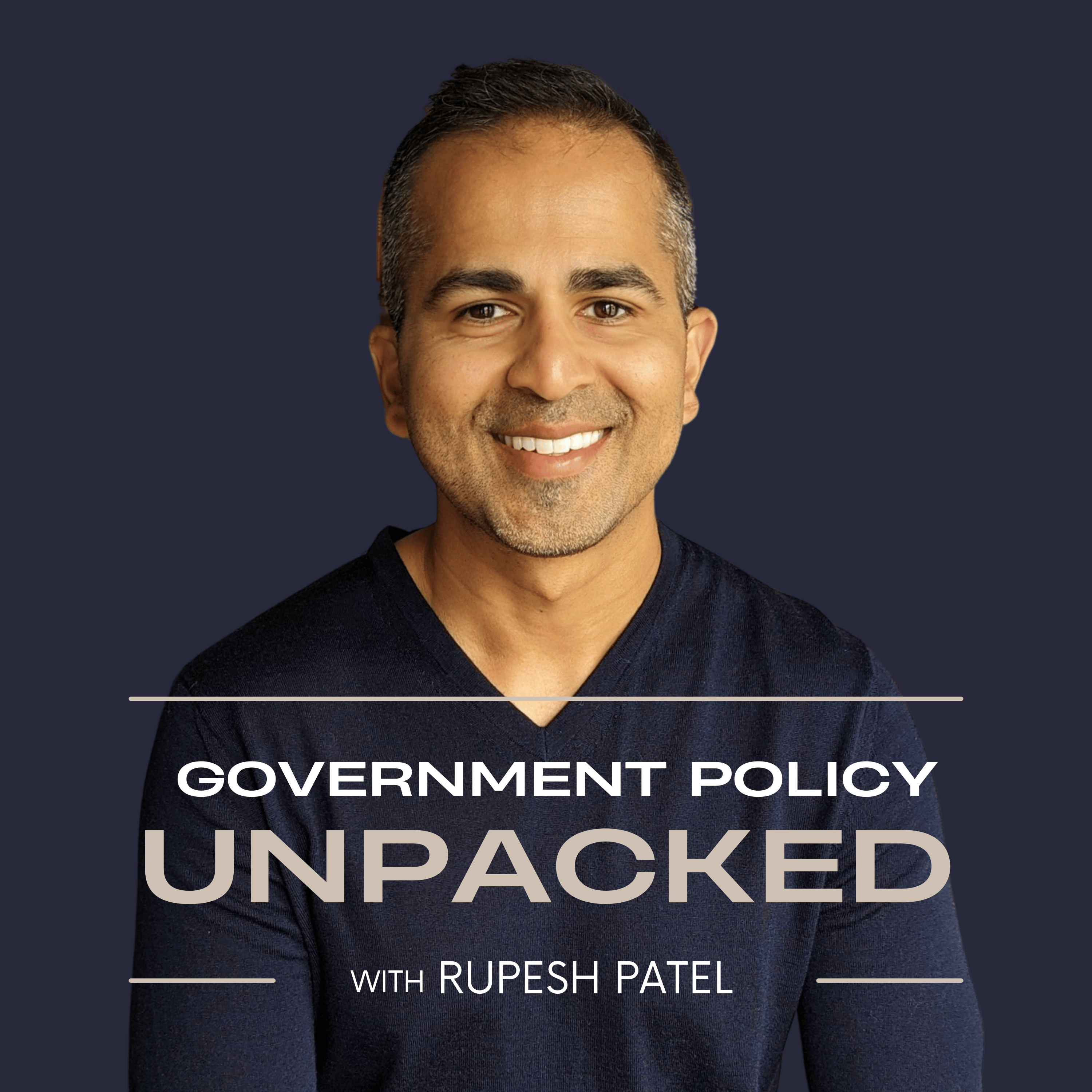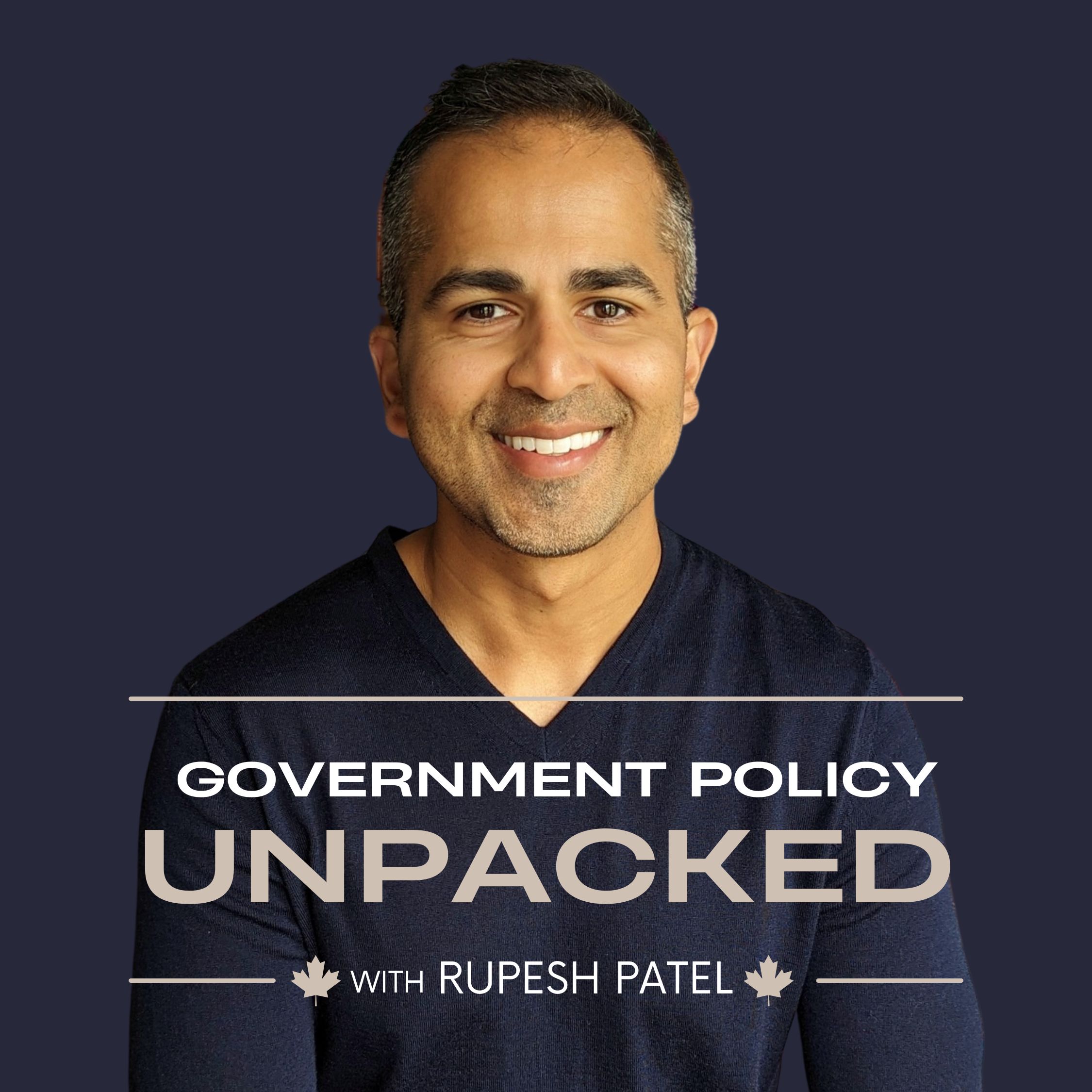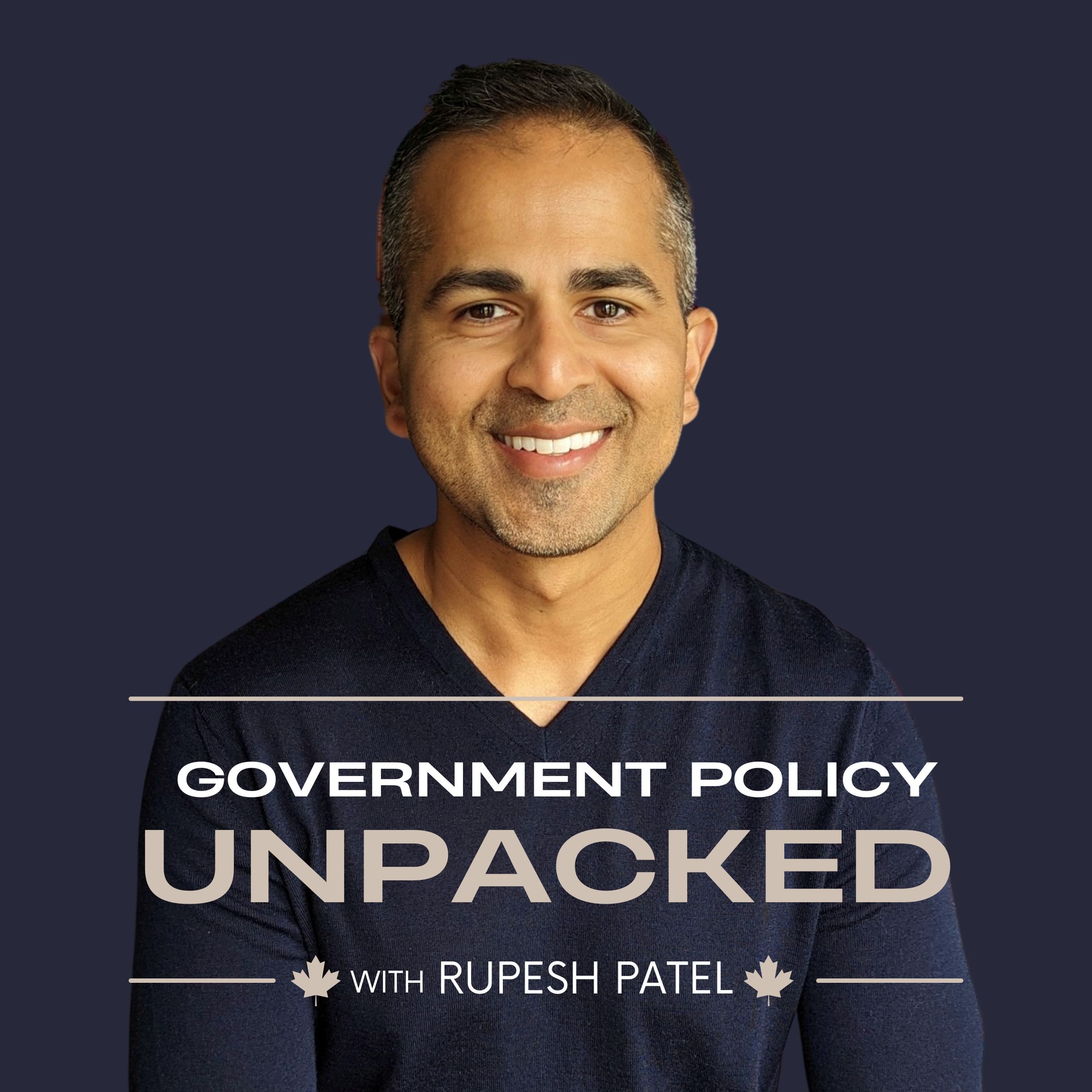Episode Transcript
Hey I’m Rupesh Patel, thanks for joining me. If this is your first time listening to my podcast then welcome! I post episodes at least weekly about government issues that matter to you.
One of the biggest issues facing Canadians is the impact of the Trump tariffs. Ever since Donald Trump tweeted about issuing a 25% tariff on Canadian goods, it’s been the primary focus for the federal and provincial governments. And one of the things that Justin Trudeau and the federal government has had to think about is if you retaliate back with tariffs on American goods and what do those retaliatory tariffs look like. The tariffs on American goods would include the agriculture and food products we as Canadians have become used to seeing in our grocery stores.
So in this episode, I will help you understand how much of the food we eat in Canada comes from the US, what barriers hold our country back from producing more of our own food, and what the government can do to help you Buy Canadian.
Let’s get to it and unpack this!
The theatre that is this White House hey? If you were like me, you spent the weekend of February 1-2, waiting for whether the tariffs would be signed into law by the US. And that’s what happened. Canada too announced retaliatory measures. But that lasted all but two days. As on Monday February 3, both Justin Trudeau and Donald Trump were able to agree on a pause for 30 days. 30 days gives the Trump administration time to see if Canada’s commitments to border security and addressing fentanyl is working, at least that’s what’s been publicly said. Canada is not out of the woods yet, and my goodness this is only 3 weeks into Trump’s Presidency.
I will admit that when the Executive Order was officially signed to put tariffs on Canadian goods, I felt anger towards the US Administration for going down this road, but also sadness for all the people on both sides of the border who will needlessly suffer at a time when things are still not affordable for many people.
If the issue is truly fentanyl as President Trump claims it is, hitting your friend with a sledge hammer is reckless. What is Trump hoping to extract from Canada? If you haven’t already check out Global News’ piece on Steve Bannon (the extreme right wing) former White House Strategist under Trump’s first term. Bannon thinks that there’s more that Trump wants from Canada and it’s largely geopolitical focused on Canada’s northern border. With the arctic warming, Canada’s sovereignty is being challenged by Russia and other arctic circle countries. The US is very concerned about this and Trump might be seeing this is a true threat. I hope to do an episode on how Canada can protect the arctic.
Anyway, it’s hard to know for sure whether these feelings of confusion, betrayal, and anger that Canadians are experiencing will be short lived or will it alter the course for US-Canada relations for some time?
I should say that it’s been incredible to see the unity amongst all Canadians, the hashtag “Buy Canadian” has been trending, and is it just me, but it seems like many folks are displaying their Canadian flags in their posts and profiles.
Oh! You know what date is on my mind? Saturday February 15, that’s when the US plays Canada in the Four Nations Cup at the Bell Centre in Montreal. That building is going to be bananas. Feels like the 2010 Gold Medal Final over again, but more hostile.
I imagine where most of you might be focusing your attention is how are these tariffs both from the US and the retaliatory ones from Canada going to effect you. I encourage you to listen to Episode 2 of this podcast where I break down how Canadians can prepare for the Trump tariffs, along with the potential economic impacts, cause they are likely to be substantial for businesses and communities that rely on our exports to the US.
Today I wanted to focus on food. We buy a lot of produce from America, so I imagine you might be concerned about the higher prices, which there will be if this trade war continues. I wanted to shine a light on how much food we bring in from America, and then explore what it would take to buy Canadian food.
So Canada imported $32 billion US dollars worth of agricultural products from America in 2023, whereas America imported $40.5 US dollars worth of agricultural products from Canada. The top 5 agricultural products that we as Canadians import from the US are:
Grain alcohol (or ethanol) which is used for our spirits and liquors, topical antiseptics, food preservatives
Food preparations or essentially processed foods
Baked goods such as breads, cakes, pastries
Dog or cat food; and,
Corn
Is it just me or are you thinking we could totally produce these items here in Canada? Canada’s department of Agriculture does a nice way of communicating just how integrated our Agri-food industries are, here’s an example lunch:
A caesars salad, well the lettuce could come from Quebec and the dressing from Illinois
A bun could be baked in California, but the flour is from Saskatchewan and yeast is from Quebec
And chili could have Tomatoes from BC, Beans from North Dakota, Beef from Alberta, Cheese from Wisconsin, and Chilli powder from New Mexico
Again, couldn’t we just produce everything we need here in Canada? And we might already. I should say I’m by no means a supply chain expert or begin to understand the details of how the logistics of North American trade and supply works. It’s very likely why America produces some items and Canada produces others, and then things come together to make your lunch, is because of comparative advantage and seasonal availability. Comparative advantage just means that Canada might be more efficient at producing flour for instance, whereas the US is better at producing beans. This ultimately reduces cost of producing that product. We also have to take into account seasonal availability, Canada has a much more limited growing season, and there’s a demand for fruits and vegetables that are not always locally available. Trading with the US has created a consistent supply of the fruits and veggies we’ve become accustomed to as Canadians.
Think about fruits like strawberries, apples, grapes, and oranges. Oranges are interesting, cause you may have heard the Canadian government specifically mention adding tariffs to oranges and even saying to avoid drinking orange juice, that’s cause they came from Donald Trump’s home state of Florida. For vegetables, it’s your leafy greens like spinach and lettuces, tomatoes, onions, and carrots.
Some of these items also come from Mexico and South America, but the US is key supplier for Canada.
In doing my research I came across a project out of the University of British Columbia called “Canada Food Flows”, so big shout out to them. Their website maps where 34 fruits and vegetables come from before landing on our plates here in Canada. It’s super neat to play around with.
Having much of our food come from the US has not only beneficial from a consistent supply point of view, but we’re also getting it for cheap. It’s been easy and cheap, who would want to mess with something like that?
Well with these tariffs and the US not being as dependable of an ally, it’s fair to ask ourselves how do we become more self reliant and feed our own people, not just during when the weather is warm but all year round?
Let’s start with interprovincial trade barriers. You may be hearing more about these in the news or from our national political leaders. These trade barriers are essentially rules and regulations that each province has for itself that make it difficult for suppliers and producers from other provinces to compete. So what ends up happening is that instead of trading within Canada, it becomes easier to trade with the US.
The thought is, is that if you ease these trade barriers between provinces it should make it easier for businesses to supply the rest of Canada. In many cases when it comes to food barriers, it will be to protect industries within a province. For example, a Quebec dairy farmer can face regulatory hurdles if they want to sell their milk to a processor in Ontario. There might also be food labelling differences. So you can imagine if you're a small business trying to navigate through the different provincial rules that it could be a daunting ordeal.
I'm going to dedicate a whole episode to interprovincial trade barriers next week cause it's what business leaders, and politicians of all stripes are talking about as a way to not only soften the blow from the Trump tariffs, but to also grow our domestic economy.
Remember one of the key benefits of trading food with the US is not just purely economic, but that it also provides a consistent supply. Blueberries and strawberries year round. It doesn't just have to be soups all winter, you can buy your lettuces cause they come from the Southern US. I know my why would like it to be soups all winter long, I just can't.
Anyway, another way for us to have consistent domestic supply of food year round is to invest in controlled environment agriculture or as we all know to be greenhouses.
Interestingly Canada has actually become really good at greenhouse growing and is in fact a world leader at being the most productive country per hectare of land. Greenhouse growing in Canada has doubled in size over the past decade.
There is huge potential both economically and ensuring a reliable food supply. There have been many advances in hydroponics, aeroponics, and vertical farming at large.
What do you think the top 5 items we grow in our greenhouses to be?
Well tomatoes are #1 where we produce $900 million in value. Cucumbers are second, followed by peppers, and then lettuce and strawberries.
There is an opportunity to boost production of lettuce for domestic use, as the vast majority of lettuce we consume comes from the US and Mexico. Strawberries also have a large potential to be greenhouse grown as it only accounts for 3% of the total fruit and vegetable greenhouse production.
There’s also an opportunity to grow other fruits and vegetables and support for innovation from the government may be necessary. Imagine getting your bananas domestically grown in a greenhouse, it’s by far the largest fruit import.
There are some challenges facing the industry such as the amount of energy needed for these massive greenhouses. There is absolutely an opportunity to have these greenhouses operating on renewable electricity.
The industry also faces labour challenges, but as it continues to advance its tech the demand for high skilled workers will likely increase. It’s tough to get workers to consider taking a job in a rural area and in agriculture.
It seems that provincial governments are starting to realize the large benefits of investing into greenhouse growing.
I should say first though that Ontario is definitely the powerhouse when it comes to greenhouse growing, it’s a huge amount of that food goes to the US.
The Quebec government in 2020 committed $100 million to double its greenhouse food production and the province is over 50% self-reliant in producing vegetables such as tomatoes, peppers, and cucumbers for itself.
Other provinces such as Alberta and BC are focused on investing on the research and innovation side of greenhouse growing, such as finding novel varieties of strawberries or tomatoes.
Overall, I think there are opportunities to either expand food trade within Canada and expand greenhouse growing in an energy sustainable way to ensure a consistent supply of many of the fruits and vegetables that we depend on the US for during our winters.
Finally, beyond governments taking action to support large greenhouse operations, there are plenty of opportunities for us to expand urban agriculture through rooftop gardens, communal gardens, or growing food using hydroponics right in your home.
I’m also already noticing that Canadian businesses are jumping on the Buy Canadian bandwagon and informing customers that their foods are Canadian made. Maybe we’ll see the big chain grocery stores create experiences for customers to really buy local and Canadian.
Anyway, appreciate you sticking around, and I hope this episode was helpful.
This is another episode of Government Policy Unpacked, let’s ride this wave of patriotism Canada and hold our government leaders accountable so that we can “Buy Canadian”.
Take care and catch you next time! Cheers!



